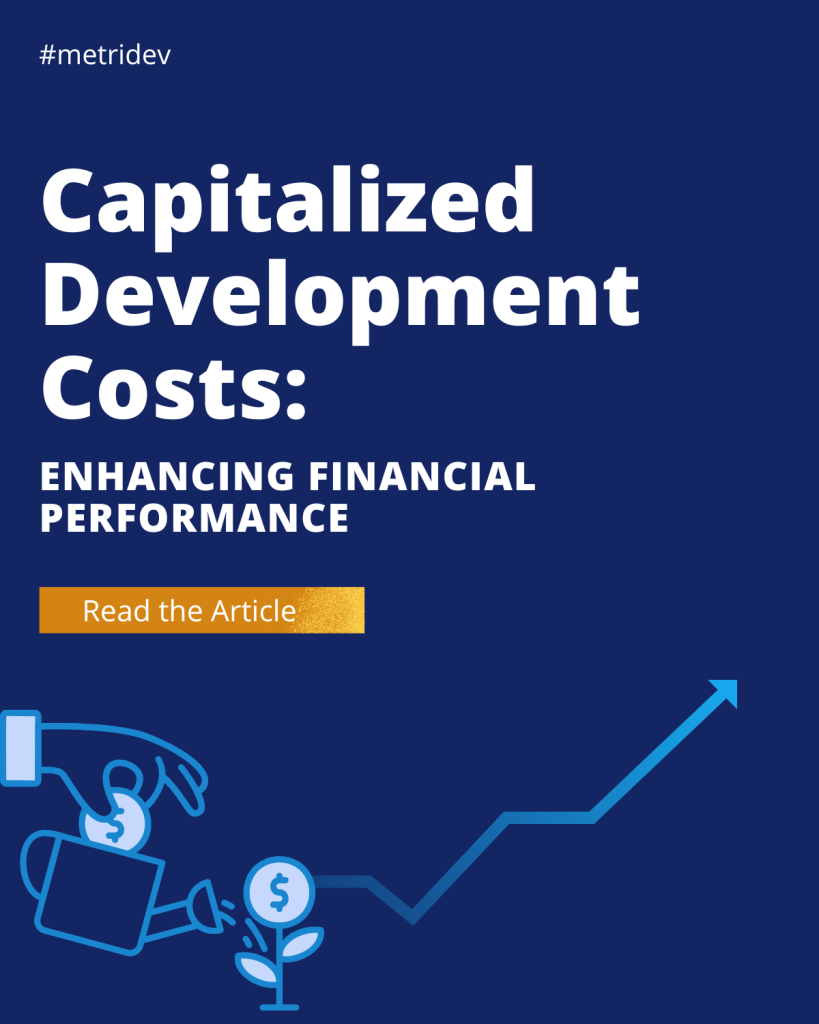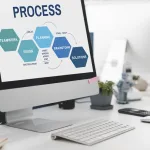Introduction to Agile and Scrum
Agile is a project management methodology that emphasizes flexibility, collaboration, and continuous improvement. It is a widely adopted approach in the software development industry, enabling teams to deliver high-quality products quickly and efficiently. At the heart of Agile lies the Scrum framework, which provides a structured process for managing complex projects.
Scrum is a lightweight, iterative, and incremental framework for managing and delivering work. It is designed to help teams address complex problems and adapt to changing requirements. Scrum emphasizes the importance of cross functional collaboration, transparency The Scrum process involves a series of events, roles, and artifacts that work together to deliver value to the customer. In this comprehensive guide, we’ll explore the key components of the Scrum process and provide insights into how it can lead to successful project management.
Scrum Process in Agile Methodology
At the core of the Scrum process is the iterative and incremental approach to project management. Instead of a linear, waterfall-style approach, Scrum divides the project into smaller, manageable “sprints” – time-boxed periods typically lasting two to four weeks. During each sprint, the team delivers a potentially shippable product increment, which they review and improve upon in the next sprint.
The Scrum process is guided by three fundamental pillars: transparency, inspection, and adaptation. Transparency ensures that all aspects of the project are visible to the team and stakeholders, while inspection and adaptation allow the team to continuously evaluate and improve their practices.
Key Roles in Scrum
The Scrum framework defines three key roles:
- Product Owner. Is responsible for representing the interests of the stakeholders and maximizing the value of the product. They are responsible for managing the product backlog, prioritizing items, and ensuring the team is working on the right things.
- Scrum Master. Is a servant-leader who guides the team in following the Scrum process. They are responsible for removing impediments, facilitating Scrum events, and ensuring the team is adhering to Scrum principles.
- Development Team. Consists of the professionals who are responsible for delivering the potentially shippable product increment at the end of each sprint. They are self-organizing and cross-functional, with the necessary skills to complete the work.
How is Work Assigned in Agile/Scrum Process?
In the Scrum process, work is assigned through the product backlog, which is a prioritized list of items that the team must complete to deliver the final product. The Product Owner is responsible for creating and maintaining the product backlog, ensuring that the most valuable and important items are at the top.
During the Sprint Planning event, the Development Team selects the items from the product backlog that they believe they can complete within the upcoming sprint. This is known as the sprint backlog, and it represents the team’s commitment for the sprint.
What is the Testing Process in Agile Scrum?
Testing is an integral part of the Agile Scrum process. In Scrum, testing is not a separate phase but rather a continuous activity that is integrated throughout the development process. The Development Team is responsible for ensuring that the product increment meets the defined acceptance criteria and is potentially shippable at the end of each sprint.
The Scrum process encourages the use of automated testing, continuous integration, and continuous deployment to ensure that the product is of high quality and can be delivered quickly. The team may also collaborate with dedicated Quality Assurance (QA) professionals to ensure comprehensive testing and risk mitigation.
Scrum Artifacts and Their Importance
Scrum defines three primary artifacts:
- Product Backlog. Is a prioritized list of features, bug fixes, and other requirements that need to be implemented to deliver the final product. The Product Owner is responsible for managing and maintaining the product backlog.
- Sprint Backlog. Is the set of product backlog items that the Development Team has committed to work on during the current sprint. It represents the team’s plan for the sprint.
- Increment. Is the sum of all the product backlog items completed during a sprint, along with the value of the increments from all previous sprints. At the end of each sprint, the team must deliver a potentially shippable product increment.
These artifacts provide transparency, enable inspection, and facilitate adaptation throughout the Scrum process. They help the team, the Product Owner, and stakeholders stay aligned on the project’s progress and direction.
Scrum Flow Process Step by Step
The Scrum process follows a structured flow, consisting of a series of events and activities:
- Sprint Planning: At the beginning of each sprint, the team holds a Sprint Planning meeting to plan the work for the upcoming sprint. They select items from the product backlog and commit to completing them within the sprint.
- Daily Scrum: During the sprint, the team holds a brief Daily Scrum meeting to discuss progress. Also to identify any impediments, and plan the work for the next 24 hours.
- Sprint Execution: The Development Team works on the items in the sprint backlog. They collaborate to deliver the potentially shippable product increment.
- Sprint Review: At the end of the sprint, the team holds a Sprint Review meeting to demonstrate the completed work to the stakeholders and gather feedback.
- Sprint Retrospective: Immediately after the Sprint Review, the team holds a Sprint Retrospective to reflect on the past sprint. Moreover, to identify areas for improvement, and plan for the next sprint.
This cyclic flow ensures that the team continuously delivers value, adapts to changing requirements, and improves their processes over time.

Sprint Planning in Scrum
The Sprint Planning event is a crucial part of the Scrum process. During this meeting, the Product Owner and the Development Team collaborate to plan the work for the upcoming sprint. The key activities during Sprint Planning include:
- Reviewing the Product Backlog. The team reviews the prioritized product backlog and selects the items they believe they can complete within the upcoming sprint.
- Estimating the Work. The Development Team estimates the effort required to complete the selected product backlog items, using techniques like story points or ideal days.
- Committing to the Sprint Backlog. The team commits to the work they will complete during the sprint, forming the sprint backlog.
- Identifying the Sprint Goal. The team defines a clear and measurable sprint goal that aligns with the overall product vision.
The Sprint Planning event sets the stage for a successful sprint, ensuring that the team is focused on the right work and has a clear plan for delivering the sprint goal.
Daily Scrum Meetings and Their Purpose
The Daily Scrum is a pivotal event in the Scrum process, where the Development Team convenes for a 15-minute stand-up meeting. Transitioning to its purposes, firstly, team members inspect progress by sharing updates on completed work, planned tasks, and encountered impediments. Secondly, they identify obstacles hindering progress, allowing the Scrum Master to intervene and resolve them. Thirdly, the team adapts their plan based on shared updates and impediments to ensure alignment with the sprint goal. Consequently, the Daily Scrum serves as a potent tool for maintaining team alignment, focus, and adaptability to changing circumstances throughout the sprint.
Sprint Review and Retrospective
At the end of each sprint, the Scrum team holds two important events:
Sprint Review: is a collaborative meeting where the Development Team demonstrates the completed work to the stakeholders, including the Product Owner. The team gathers feedback, discusses the current market conditions, and collaborates on the next steps for the product.
Sprint Retrospective: Immediately following the Sprint Review, the Scrum team holds a Sprint Retrospective. This is an opportunity for the team to reflect on the past sprint, identify what went well, what could be improved, and agree on actionable steps to enhance their Scrum process for the next sprint.
These events are crucial for ensuring continuous improvement, adapting to changing requirements, and enhancing the team’s overall effectiveness.
Challenges and Solutions in Implementing Scrum
While the Scrum process offers many benefits, it is not without its challenges. Transitioning to the challenges and their potential solutions, firstly, lack of understanding poses a significant hurdle, necessitating comprehensive training and ongoing support for the entire team, including stakeholders. Secondly, resistance to change may impede the transition from traditional project management approaches to Scrum. It demands a culture of openness, transparency, and continuous improvement. Thirdly, ineffective backlog management can lead to confusion and inefficiency. It can highlitght the importance of providing training and guidance to the Product Owner on effective backlog maintenance.
Moreover, accurately estimating effort, particularly for complex tasks, presents a challenge. It can be addressed by encouraging the team to use historical data and experiment with estimation techniques. Lastly, fostering effective collaboration is crucial, necessitating a collaborative culture, team-building activities, and open communication. By addressing these challenges through training, coaching, and a commitment to continuous improvement, organizations can successfully implement the Scrum process.
What are the 5 Main Activities of the Scrum Process?
The five main activities in the Scrum process are:
1. Sprint Planning: Defining the sprint goal and selecting the product backlog items to be completed during the sprint.
2. Daily Scrum: A daily 15-minute stand-up meeting to inspect progress and adapt the plan for the next 24 hours.
3. Sprint Execution: The Development Team working to deliver the potentially shippable product increment.
4. Sprint Review: Demonstrating the completed work to stakeholders and gathering feedback.
5. Sprint Retrospective: Reflecting on the past sprint and identifying areas for improvement.
These activities, when executed effectively, enable the Scrum team to continuously deliver value, adapt to changing requirements, and enhance their processes over time.
Benefits of Adopting Scrum in Agile
Adopting the Scrum process within an Agile framework can yield numerous benefits. Firstly, the iterative and incremental nature of Scrum enhances flexibility, enabling teams to swiftly respond to changing requirements and market conditions. Secondly, through focused sprint cycles, clear roles, and regular feedback loops, Scrum promotes improved productivity and efficiency. Additionally, by emphasizing cross-functional collaboration, Scrum enhances collaboration, fostering shared understanding and improved team dynamics. Moreover, by delivering potentially shippable product increments at the end of each sprint, Scrum facilitates faster time-to-market for products. Furthermore, Scrum provides increased transparency through its artifacts and events, offering visibility into project progress for better decision-making and risk management. Lastly, the Sprint Retrospective promotes continuous improvement by encouraging teams to reflect on their processes and find ways to enhance them. These benefits collectively position Scrum as a highly effective Agile framework for organizations seeking to deliver high-quality products quickly and efficiently.
Scrum vs Other Agile Methodologies
While Scrum remains a widely adopted Agile framework, it is not the sole option available within the Agile landscape. Transitioning to alternative methodologies, firstly, Kanban emphasizes visualizing workflow, limiting work-in-progress, and continuous improvement, often complementing Scrum practices. Secondly, Extreme Programming (XP) prioritizes practices like pair programming, test-driven development, and continuous integration to ensure high-quality software delivery. Thirdly, Lean principles, such as waste elimination and value maximization, are commonly integrated into Agile practices. Additionally, Crystal comprises a family of Agile methodologies tailored to project and organizational needs. The key distinction among Scrum and these methodologies lies in the level of structure and emphasized practices. Organizations have the flexibility to adopt a pure Scrum approach or blend elements from various Agile methodologies to suit their distinct requirements.
Best Practices for Successful Scrum Implementation
To ensure a successful Scrum implementation, it is crucial to adhere to several best practices. Firstly, provide comprehensive training to all team members, including the Product Owner and Scrum Master, on Scrum principles and practices. Transitioning to fostering a supportive culture, establish an environment of openness, transparency, and continuous improvement to facilitate the team’s adoption of the Scrum mindset. Moreover, empower the Product Owner by ensuring they possess the necessary authority, skills, and support to effectively manage the product backlog and represent stakeholder interests.
Additionally, promote collaboration by creating an atmosphere conducive to cross-functional collaboration, open communication, and shared accountability. Furthermore, continuously review and adapt the Scrum process based on feedback, lessons learned, and evolving business needs. Leveraging Scrum tools can further enhance productivity and support the framework. Lastly, celebrate team accomplishments and milestones to boost morale and reinforce the Scrum mindset. By embracing these best practices, organizations can increase the likelihood of successfully implementing the Scrum process and realizing the benefits of Agile project management.
What is an Example of a Scrum Process?
Here’s an example of a Scrum process:
The product development team is working on a new mobile app for a fitness tracking company. The Product Owner has created a prioritized product backlog, which includes features like user authentication, activity tracking, and data visualization.
At the beginning of the sprint, the team holds a Sprint Planning meeting. They review the top items in the product backlog, estimate the effort required, and commit to completing a set of features during the upcoming two-week sprint.
During the sprint, the team holds a Daily Scrum meeting every morning to discuss their progress, identify any impediments, and plan the day’s work. The Scrum Master helps remove any obstacles that arise, ensuring the team can maintain their momentum.
At the end of the sprint, the team holds a Sprint Review meeting, where they demonstrate the completed features to the stakeholders, including the Product Owner. The team gathers feedback and discusses the next steps for the product.
Immediately following the Sprint Review, the team holds a Sprint Retrospective. They reflect on what went well, what could be improved, and identify action items to enhance their Scrum process for the next sprint.
This cycle of Sprint Planning, Daily Scrum, Sprint Execution, Sprint Review, and Sprint Retrospective continues iteratively, allowing the team to deliver incremental value to the customer and continuously improve their processes.
Conclusion
The Scrum process is a powerful Agile framework that enables teams to deliver high-quality products quickly and efficiently. By embracing the principles of transparency, inspection, and adaptation, Scrum teams can continuously improve their processes, respond to changing requirements, and create value for their customers.
Whether you’re new to Scrum or looking to enhance your existing Scrum practices, this comprehensive guide has provided you with a deep understanding of the Scrum process, its key components, and best practices for successful implementation. By leveraging the Scrum framework, your organization can unlock the benefits of Agile project management and stay ahead in a rapidly evolving business landscape.
To learn more about implementing the Scrum process in your organization and how it can benefit your team, read our article Scrum Team Working Agreement: Key Elements for Success.









Leave a Reply